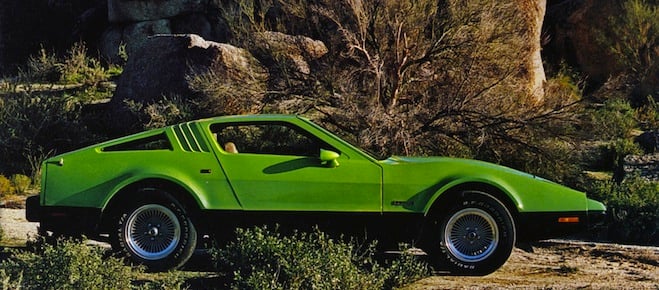5 Canadian automotive failures
A list of weird and wonderful ‘Made in Canada’ cars that didn’t quite make it
Share

1. Le Roy: Designed by Nelson and Milton Good, the Le Roy was built in 1903 in Berlin, Ont., now Kitchener. No more than 20 were built before the company went bankrupt. Why? The purchase price of a new Le Roy in 1903 was $650, while the average annual income in Canada was only $275. The brake pedal on the Le Roy was also the same pedal that put the vehicle into reverse, which caused confusion among drivers.
2. Frontenac: In 1931, with the U.S.-based automaker Durant Motors near collapse, a group of investors acquired the company’s Canadian operations in Toronto and established Dominion Motors. Dominion released the Frontenac, a six-cylinder car, but it didn’t sell well. The next year Dominion rolled out a restyled Frontenac. But as the Depression deepened, Dominion shut down and the Frontenac’s brief run was over.
3. Manic GT: The Manic GT was the brainchild of Montreal native Jacques About. Despite keen demand—there was a two-month waiting list for new buyers—the factory based in Granby, Que., produced only 160 cars. The problem, a dependence on parts from Renault, proved to be the company’s downfall. The supply of parts could not meet the demand and the Granby factory closed in May 1971.
4. Bricklin: American millionaire Malcolm Bricklin’s idea was to develop a “high-performance safety car” in Saint John, N.B. He hired Herb Grasse, who created the original Batmobile. The car was designed without an ashtray because Bricklin believed it was unsafe to drive and smoke. That, combined with design and engineering flaws, lead to the collapse of the company in 1976.
5. Ballard fuel-cell car: There was never a single car from Ballard Power. Rather the company teamed with Ford and Daimler to develop experimental models using its hydrogen fuel-cell technology. In 2000 investors were convinced fuel cells would replace the internal combustion engine, and Ballard stock soared to $180. But steep costs, technological challenges and a lack of refuelling stations brought Ballard’s aspirations back to Earth (along with the stock price; today the shares are worth about $1.) In 2007, Ballard abandoned the hydrogen vehicle market.
Sources: Canada Science and Technology Museum; news reports
 Have you ever wondered which cities have the most bars, smokers, absentee workers and people searching for love? What about how Canada compares to the world in terms of the size of its military, the size of our houses and the number of cars we own? The nswers to all those questions, and many more, can be found in the first ever Maclean’s Book of Lists.
Have you ever wondered which cities have the most bars, smokers, absentee workers and people searching for love? What about how Canada compares to the world in terms of the size of its military, the size of our houses and the number of cars we own? The nswers to all those questions, and many more, can be found in the first ever Maclean’s Book of Lists.
Buy your copy of the Maclean’s Book of Lists at the newsstand or order online now.